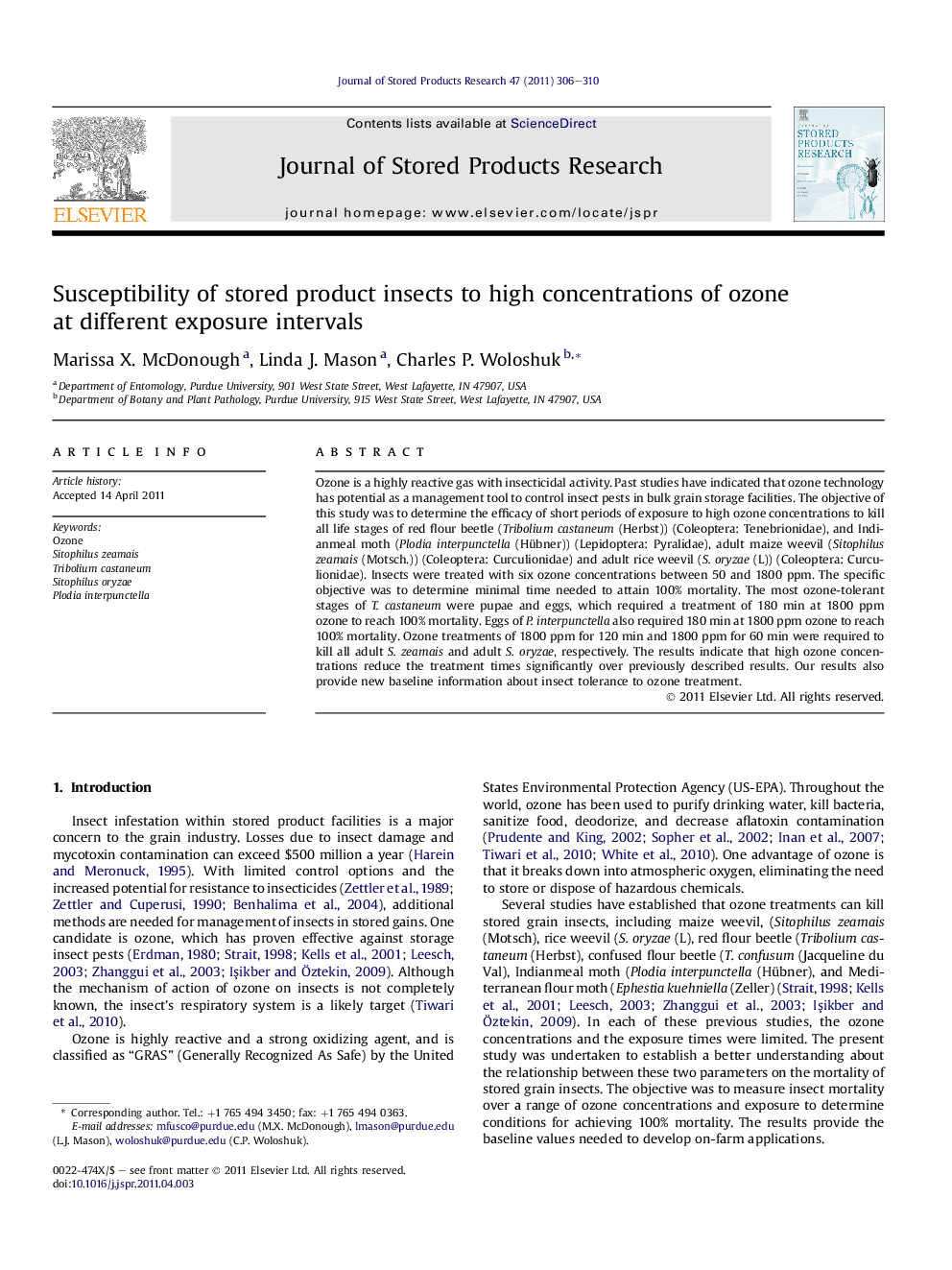| Article ID | Journal | Published Year | Pages | File Type |
|---|---|---|---|---|
| 4517226 | Journal of Stored Products Research | 2011 | 5 Pages |
Ozone is a highly reactive gas with insecticidal activity. Past studies have indicated that ozone technology has potential as a management tool to control insect pests in bulk grain storage facilities. The objective of this study was to determine the efficacy of short periods of exposure to high ozone concentrations to kill all life stages of red flour beetle (Tribolium castaneum (Herbst)) (Coleoptera: Tenebrionidae), and Indianmeal moth (Plodia interpunctella (Hübner)) (Lepidoptera: Pyralidae), adult maize weevil (Sitophilus zeamais (Motsch.)) (Coleoptera: Curculionidae) and adult rice weevil (S. oryzae (L)) (Coleoptera: Curculionidae). Insects were treated with six ozone concentrations between 50 and 1800 ppm. The specific objective was to determine minimal time needed to attain 100% mortality. The most ozone-tolerant stages of T. castaneum were pupae and eggs, which required a treatment of 180 min at 1800 ppm ozone to reach 100% mortality. Eggs of P. interpunctella also required 180 min at 1800 ppm ozone to reach 100% mortality. Ozone treatments of 1800 ppm for 120 min and 1800 ppm for 60 min were required to kill all adult S. zeamais and adult S. oryzae, respectively. The results indicate that high ozone concentrations reduce the treatment times significantly over previously described results. Our results also provide new baseline information about insect tolerance to ozone treatment.
► 100% mortality of stored product pests can be achieved with ozone. ► Eggs and pupae are more resistant to ozone compared to adults and larvae. ► 180 min at 1800 ppm is needed for complete mortality of all life stages. ► Ozone is a viable method of treatment of insect in semi-continuous flow systems.
